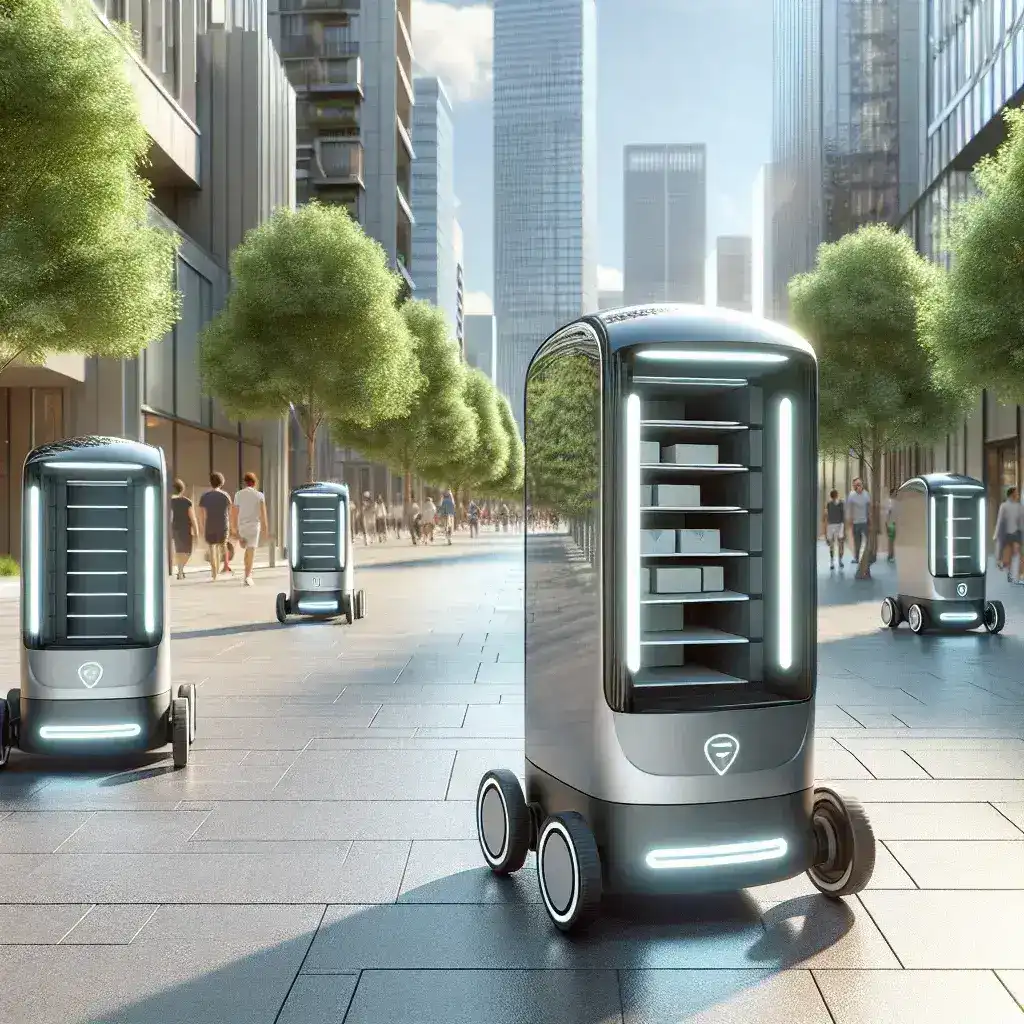Autonomous Delivery Robots Navigate Sidewalks for Last-Mile Package Delivery

Introduction
The rise of e-commerce has created an ever-increasing demand for efficient last-mile delivery solutions. As cities become more populated and the need for quick delivery grows, traditional delivery methods are being challenged. Enter autonomous delivery robots—innovative machines that navigate sidewalks to bring packages directly to customers’ doors. In this article, we will explore how these robots work, their impact on urban logistics, and what the future holds for this technology.
What Are Autonomous Delivery Robots?
Autonomous delivery robots are small, self-driving vehicles designed specifically for transporting goods in urban environments. These robots are equipped with advanced sensors, cameras, and GPS technology that allow them to navigate sidewalks, cross streets, and avoid obstacles. They are typically programmed to operate within a specific area, making them ideal for last-mile delivery.
How Do They Work?
- Navigation and Mapping: Using a combination of GPS, LiDAR, and computer vision, these robots create real-time maps of their surroundings. This allows them to identify the best routes, recognize pedestrians, and navigate around obstacles.
- Obstacle Detection: Autonomous robots are equipped with sensors that detect obstacles in their path. This feature ensures safety for both the robot and pedestrians, as they can stop or reroute if they encounter an unexpected object.
- Delivery Process: Once a delivery is scheduled, the robot travels to the designated location. Upon arrival, the recipient can unlock the robot using a mobile app, retrieve their package, and the robot returns to its station or continues to the next delivery.
The Evolution of Delivery Robots
The concept of autonomous delivery is not entirely new. The journey began with simple prototypes and has evolved into fully functional robots capable of complex navigation. Here’s a brief look at the historical context:
Early Experiments
In the early 2010s, various tech companies began experimenting with delivery robots. These initial attempts were rudimentary, often requiring manual control or oversight.
Technological Advancements
As technology advanced, so did the capabilities of these robots. Improvements in AI, machine learning, and sensor technology have enabled robots to operate more independently and safely in complex environments.
Commercialization
Today, companies like Starship Technologies, Amazon, and Nuro are at the forefront of deploying delivery robots in urban areas. Their successful pilot programs have paved the way for broader adoption.
Pros and Cons of Autonomous Delivery Robots
Advantages
- Efficiency: Autonomous robots can operate around the clock, reducing delivery times and increasing overall efficiency.
- Cost-Effectiveness: By reducing the need for human labor, companies can lower delivery costs, potentially passing these savings on to consumers.
- Environmental Benefits: Many delivery robots are electric, contributing to lower carbon emissions compared to traditional delivery vehicles.
Challenges
- Regulatory Hurdles: As with any new technology, regulatory frameworks are still catching up, which can hinder deployment in some areas.
- Safety Concerns: There may be concerns about interactions between delivery robots and pedestrians, especially in crowded urban settings.
- Limited Range: Most robots are designed for short-distance deliveries, which can limit their use in more rural or expansive areas.
The Future of Delivery Robots
Looking ahead, the potential for autonomous delivery robots is significant. As urban populations continue to grow and e-commerce expands, the demand for efficient last-mile delivery solutions will only increase. Here are some predictions for the future:
Integration with Smart Cities
As cities adopt more smart technologies, autonomous delivery robots will likely integrate more seamlessly into urban logistics. For instance, communication between robots and city infrastructure could enhance their navigation and safety.
Expanded Applications
In addition to package delivery, these robots could be adapted for various uses, such as transporting medical supplies, groceries, or even food from restaurants.
Public Acceptance
As people become more accustomed to seeing delivery robots on sidewalks, public acceptance will likely grow, leading to more widespread usage and trust in the technology.
Real-World Examples
Several companies are already paving the way in the deployment of autonomous delivery robots:
Starship Technologies
Starship’s small robots deliver food and groceries in various cities across the United States and Europe, successfully completing thousands of deliveries each week.
Nuro
Nuro focuses on larger autonomous delivery vehicles designed for transporting goods rather than passengers. Their robots are currently being tested for grocery deliveries and other services.
Amazon Scout
Amazon has developed its own delivery robot, Scout, which is currently being piloted in select neighborhoods. The robot is designed to navigate sidewalks and deliver packages directly to customers.
Cultural Relevance and Acceptance
As autonomous delivery robots become more prevalent, they are likely to influence urban culture and daily life. Residents in cities with these robots may find their shopping habits changing, with more people opting for delivery services due to the convenience.
Conclusion
Autonomous delivery robots represent a significant advancement in last-mile logistics. By navigating sidewalks and delivering packages efficiently, they have the potential to revolutionize how goods are transported in urban environments. While challenges remain, the future looks promising as technology continues to evolve and public acceptance grows. As we move forward, it will be fascinating to see how these robots integrate into our daily lives, shaping the future of delivery and urban living.
